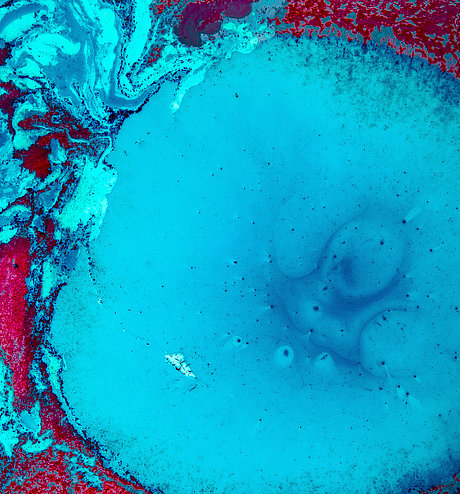Submerged Bioprinting - 3D-Printing of cell-containing hydrogel structures with high geometrical complexity
Ref.-Nr. 3067-5117
Keywords: 3D-Bioprinting, Hydrogels, cell structures
Bioprinting technologies recently appeared as important tissue engineering alternatives for regenerative medicine and organ transplantation. This novel approach for printing of tissues substitutes is based on the submersion of simultaneously printed cell-hydrogel structures into a non-toxic perfluorodecalin liquid substrate. Not only the development of a robotic plattform for 3D-printing has been performed, but also the combination of natural or synthetic hydrogels with human mesenchymal stem cells.
The present invention allows to print the conduits submerged in non-miscible solvents of high density, such as fluorocarbons (e.g. C12F27N), that support the printed structure while it is being generated resulting in superior performance in relation to other methods. The hydrophobicity and high density of the fluorocarbon help to control the deposition of each individual droplet, resulting in a high degree of precision of the 3D-printed construct, which has been proven to remain long-term stable. Furthermore, live/dead- and DAPI-staining showed viable cells 24 h after the printing process, as well as after 21 days in culture.
In a special embodiment, the invention describes a simpler way of reproducing the structural hierarchy of multiple tissue substitutes using an inkjet drop-on-demand (DoD) bioprinting approach. This novel strategy for cell printing can therefore be used in the future for broad applications in the field of tissue engineering and regenerative medicine. In particular the method is suitable for printed tissue substitutes with high geometrical complexity.
Vorteile
- Platform technology for generating different tissue models
- Cells are still viable after 21 days in culture
- High geometrical flexibility
- Highly precise process
- Replicable
- Drop-on-demand (DoD) bioprinting approach
Kommerzielle Anwendung
The present inventions allows for new strategies in the 3D-cell-printing of tissue substitutes.
Aktueller Stand
In case of interest we will be pleased to inform you about the patent status.
Technologie-Reifegrad
1
2
3
4
5
6
7
8
9
Versuchsaufbau in Einsatzumgebung
Relevante Veröffentlichungen
Duarte Campos DF, Blaeser A, Weber M, Jäkel J, Neuss S, Jahnen-Dechent W, Fischer H.; Three-dimensional printing of stem cell-laden hydrogels submerged in a hydrophobic high-density fluid.; Biofabrication 5, 2013, 015003
—
Eine Erfindung der Uniklinikum Aachen.



